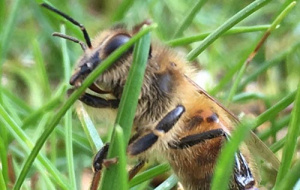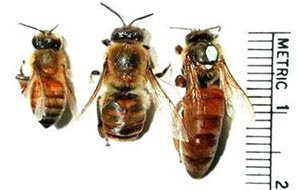Bee news March
 With the imminent addition of the educational hive to the wild life garden, south of Univ’s Library, we thought it would give us the perfect opportunity to tell you each month some facts about honey bees (Apis mellifera) and to tell you what beekeepers will be doing in their apiary.
With the imminent addition of the educational hive to the wild life garden, south of Univ’s Library, we thought it would give us the perfect opportunity to tell you each month some facts about honey bees (Apis mellifera) and to tell you what beekeepers will be doing in their apiary.
The apiary in March
When the weather conditions are suitable there should be more activity in the hive, so beekeepers will be checking to see if the colonies are flying well and bringing pollen back into the hive. On warm days the hive will be lightly smoked to check if the bees look as strong and healthy as they did in September. The hive will be heft to check there is still enough food stored, if it feels light then feeding will take place using a dilute syrup (1:1 sugar: water). The brood nest will be inspected later on in the month on a warm day when flowering currant (Ribes sanguinium) is in flower.
Bee facts
The honey bee is a remarkable insect in many different ways. The biology of the honey bee reveals just how special it is and what makes it different to other insects. Here you can learn more about the features of the honey bee and some honey bee key facts about what makes it so special…
Six legs, four wings, five eyes!
Legs – The honey bee has three pairs of legs, six legs in total. However, the rear pair is specially designed with stiff hairs to store pollen when flying from flower to flower. This is why a heavily laden worker bee is seen to have two golden pouches in full season. The front pair of legs has special slots to enable the bee to clean its antenna.
Wings – The honey bee has four wings. The front and rear wings hook together to form one big pair of wings and unhook for easy folding when not in flight.
Eyes – Incredible as it may seem, the honey bee has five eyes, two large compound eyes and three smaller ocelli eyes in the centre of its head.

Worker, drone and queen
In any hive there are three types of honey bee: a single queen, thousands of female worker bees and, in the summer, hundreds of male drones. The drone bee does no work and in the early autumn they are evicted by the workers and die.
As soon as the educational hive is installed we’ll let you know via social media (Facebook, Twitter) – please do then come and take a look for yourself.
Stuart Fouracre, Assistant Gardener
Published: 23 March 2018
